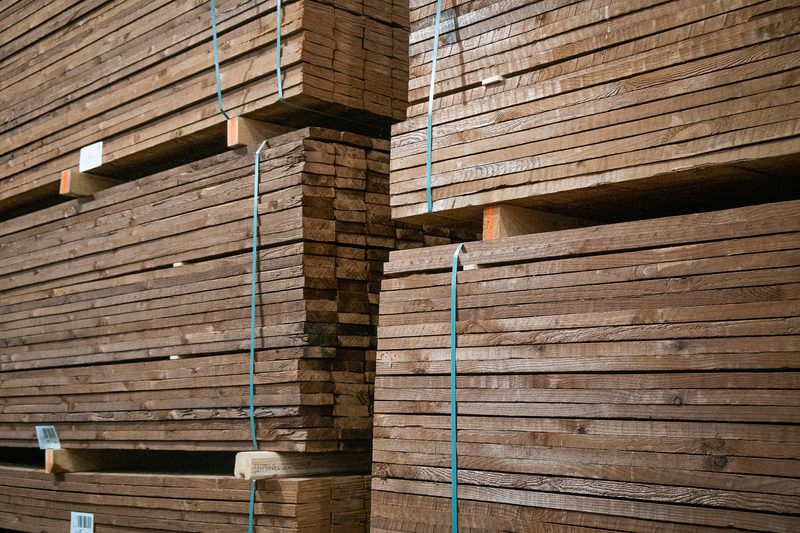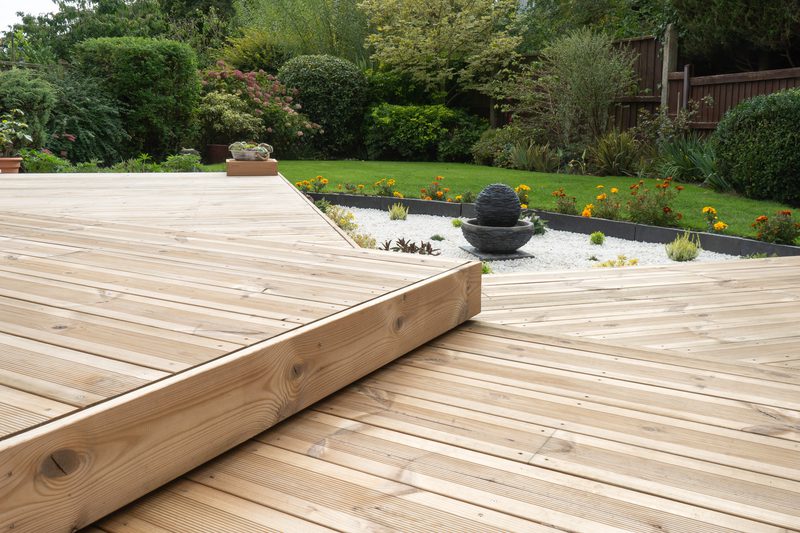You might be familiar with thermally-modified timber products, like Thermo-ayous, Thermo-pine, Thermo-tulipwood and Thermo-ash – also commonly referred to as ThermoWood.
The thermal modification process: split into 3 key phases
Through exposure to heat and steam in an oxygen-free environment, the chemical composition of the wood changes.
During the process, the hemicellulose, a complex branched structure composed of sugar monomers found in cell walls, breaks down. The process alters the lignin and cellulose structures, improving the timber's resistance to decay, enhancing durability, and increasing dimensional stability.
Phase 1: high-temperature heating
The timber is placed into a kiln and heated to extremely high temperatures which dry the timber and reduce the moisture content to almost zero.
During this phase, temperatures inside the kiln can reach up to 230°C, so steam is introduced to prevent the timber from cracking and burning.

Phase 2: thermal treatment
During the second phase, a steady temperature is maintained.
This further reduces the moisture content, changing the chemical composition of the wood, transforming the organic compounds making the timber incredibly durable and stable.
The high temperature also gives the wood its recognisable dark brown colour.

Phase 3: controlled cooling
The third and final phase reduces the temperature of the timber using water and steam, slowly increasing the moisture content to between 4-7%. The slow introduction of steam further improves the dimensional stability and durability of the wood.
After the final phase, the wood is ready for quality control checks to ensure the high standard.


View project: FSC-certified Thermo-ayous shadow gap cladding
Because it creates a high-performance product that stands the test of time and does not make use of environmentally-damaging chemicals (like with tanalisation), thermal modification is a sustainable process.
We've actually written a blog on the key differences between thermally modified and tanalised wood.
Myth busting: thermally-modified timber is not the same as fire-treated timber
This is a misconception we've encountered a few times. Thermally-modified timbers like Thermo-ayous have a Euroclass rating of D (moderate contribution to fire).
This can be boosted to B (very limited contribution to fire) with a fire retardant treatment – such as our fully tested and certified Burnblock® fire treatment.
Take a look at our blog on fire system ratings for more information.
Why is thermally-modified wood better?
The science behind thermal modification lies in molecular change. In an oxygen-free environment, the chemical composition of the wood is transformed.
Hemicellulose is a complex, branched structure composed of sugar monomers found in cell walls. Heat treatment causes it to break down. This also alters the lignin and cellulose structures, improving the timber's resistance to decay, enhancing durability, and increasing dimensional stability.
- Decay resistance: The high temperatures and oxygen-free environment break down hemicellulose, a sugar-rich substance that fungi and decay-causing organisms feed on.
- Increased durability: The heat alters lignin, a natural glue in the wood, making it less prone to breakdown by UV light and weathering. The wood becomes more chemically inert and less reactive to moisture and microbes.
- Improved dimensional stability: Heating permanently changes the sites that normally bond with water molecules. With fewer of these, the wood absorbs less moisture from the air, resulting in less swelling and shrinking with humidity.
This makes the wood ideal for exterior applications where it will have to encounter the destructive forces of nature – chiefly wood-decaying organisms, UV and moisture.

Start your thermally-modified timber project
At Duffield Timber, we are leading suppliers of thermally-modified timbers for cladding and decking.
This includes Thermo-ayous, Thermo-Nordic pine, Thermo-tulipwood and the most recent addition to our collection, Thermo-ash – which is already proving to be a hit.
We also offer Accoya, which while not enhanced through heat, is modified through acetylation, which involves use of sustainable chemicals.
Get in touch today
